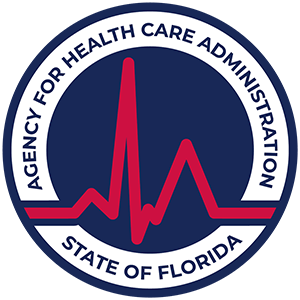Binge Drinking Statistics & Facts [Updated]
Dive into binge drinking statistics & facts, understand its impact and explore effective preventive strategies.
Top 10 Key Statistics about Binge Drinking Statistics & Facts
- In 2022, 21.7% of people aged 12 and older in the United States reported binge drinking in the past month.
- This equates to approximately 61.2 million people engaging in binge drinking behavior.
- Among youth ages 12 to 17, 3.2% reported binge drinking, totaling 834,000 individuals.
- For adults ages 18 and older, 23.5% engaged in binge drinking, amounting to 60.3 million individuals.
- Excessive alcohol use, including binge drinking, is responsible for about 178,000 deaths in the United States annually.
- Binge drinking accounted for approximately $191.1 billion of the total economic costs of excessive alcohol use, which amounted to $249 billion in 2010.
- Rates of self-reported binge drinking among college students decreased from 45.9% in 2006 to 43.9% in 2013.
- Among young adults ages 18 to 25, rates of binge drinking decreased slightly from 44.6% in 1988 to 37.7% in 2014.
- Women tend to suffer a variety of harms at lower levels of alcohol exposure than men, with a higher risk for alcohol-related health problems.
- Among women who are sexual minorities, heavy drinking or AUD is substantially more likely compared to heterosexual women.
Binge Drinking Statistics Overview
To understand the issue of binge drinking in the United States, it is critical to have a clear understanding of what constitutes binge drinking and to know the prevalence of this behavior. The following sections provide an overview of the binge drinking situation in the United States.

Binge Drinking Definition
According to the Centers for Disease Control and Prevention, binge drinking is defined as consuming five or more drinks on an occasion for men, or four or more drinks on an occasion for women. This pattern of excessive alcohol use is the most common and costly in the United States. It's important to note that most people who binge drink are not dependent on alcohol. However, binge drinking itself is harmful and is associated with serious injuries and diseases, as well as with a higher risk of alcohol use disorder.
Prevalence in the United States
The prevalence of binge drinking in the United States is quite high. In 2022, 21.7% of people aged 12 and older, which equates to approximately 61.2 million people, reported binge drinking in the past month. This number includes 834,000 youth ages 12 to 17 (3.2% in this age group) and 60.3 million adults ages 18 and older (23.5% in this age group) [1].
Excessive alcohol use, including binge drinking, is responsible for about 178,000 deaths in the United States each year and $249 billion in economic costs in 2010.
This data illustrates the severity of the binge drinking problem in the United States, signifying the need for effective prevention and intervention strategies.
In the following sections, we will delve deeper into the impact of binge drinking, disparities among different demographics, trends over time, and preventive measures.
Impact of Binge Drinking
Binge drinking, the most common and costly pattern of excessive alcohol use in the United States, has a profound impact on both health and economy.
Health Consequences
Binge drinking is associated with a myriad of health problems. Although most people who binge drink are not dependent on alcohol, the act of binge drinking is harmful on its own and is associated with serious injuries and diseases, as well as with a higher risk of alcohol use disorder [3].
Long-term effects of binge drinking include an increased risk of developing alcohol use disorder, liver disease, and neurological damage.
In terms of fatalities, approximately 140,000 deaths resulted from alcohol misuse annually in the United States between 2015 and 2019, with almost half of those associated with binge drinking.
Economic Costs
The economic impact of binge drinking is staggering. According to statistics from the CDC, excessive alcohol use is responsible for about $249 billion in economic costs in 2010. Researchers estimated that binge drinking accounted for 77% of these costs, which amounts to $191.1 billion.
These figures account for a range of factors including healthcare costs for treating alcohol-related health problems, loss of workplace productivity due to illness or premature death, and costs associated with alcohol-related crime and accidents.
In understanding the impacts of binge drinking, it becomes clear that this is not just a personal issue but a societal one. The health consequences and economic costs of binge drinking underline the need for effective prevention and intervention strategies.
Binge Drinking Among Different Age Groups
Binge drinking affects a wide range of age groups, with varying degrees of prevalence. In this section, we will take a closer look at the statistics regarding youth and college students as well as young adults.
Youth Statistics
According to the NIAAA, in 2022, 834,000 youth aged between 12 to 17 reported binge drinking in the past month. This constitutes 3.2% of this age group.
It is essential to note that binge drinking at a young age can have serious health and safety risks, including potential developmental issues and an increased risk of alcohol addiction later in life.
College Students and Young Adults
Binge drinking is a significant concern among college students and young adults. Studies show that rates of binge drinking (defined as consuming four/five or more drinks for women/men) among college-age individuals in the United States remain high, ranging from 30% to 40% [6].
The rate of self-reported binge drinking among college students in the previous 2 weeks decreased from 44% in 1980 to 35% in 2014. Similarly, rates of binge drinking among young adults ages 18 to 25 decreased slightly from 44.6% in 1988 to 37.7% in 2014. Among college students, the rates dropped slightly from 45.9% in 2006 to 43.9% in 2013.
Despite the decrease, the prevalence of binge drinking among these age groups is still cause for concern. Efforts to educate and prevent binge drinking, especially in environments that may encourage excessive alcohol use, are of utmost importance.
Gender Disparities in Binge Drinking
Analyzing the binge drinking statistics & facts, it becomes evident that there are significant disparities in binge drinking behaviors between different gender groups. These disparities can be observed in both women and sexual minority groups.
Women and Binge Drinking
When it comes to binge drinking, women tend to suffer a variety of harms at lower levels of alcohol exposure than men. Women with alcohol use disorder (AUD) perform more poorly than men with AUD on cognitive tasks. Moreover, women are at greater risk than men for alcohol-related health problems, including liver inflammation, cardiovascular diseases, and certain cancers [7].
The above table summarizes the key differences in the impact of binge drinking on women and men.
Sexual Minority Groups
In terms of sexual minorities, binge drinking statistics & facts reveal interesting patterns. Among women who are sexual minorities, heavy drinking or AUD is substantially more likely compared to heterosexual women. In contrast, among gay men, the likelihood of heavy drinking or AUD is similar to that in heterosexual men.
It's important to note that studies specifically report on people of sexual minority status, but not gender minority status like transgender people, which requires more research.
These differences highlight the need for targeted prevention and intervention strategies that consider the unique experiences and vulnerabilities of these groups. As we continue to delve into the complexities of binge drinking, it becomes increasingly clear that a one-size-fits-all approach is not sufficient. Instead, these gender disparities underscore the importance of personalized, gender-sensitive approaches to addressing the binge drinking dilemma.
Trends and Changes in Binge Drinking
Understanding the trends and changes in binge drinking over time can provide valuable insights into shifts in behavior and patterns, enabling more targeted interventions.
Trends Over Time
The rate of self-reported binge drinking among different age groups has seen some changes over the years. Among college students, the rate of self-reported binge drinking in the previous 2 weeks decreased from 44% in 1980 to 35% in 2014. Similarly, among young adults aged 18 to 25, rates of binge drinking decreased slightly from 44.6% in 1988 to 37.7% in 2014 [6].
Emerging Patterns
While the rates of binge drinking have shown a slight decrease among certain age groups, they remain high among college-age individuals in the United States, ranging from 30% to 40%.
In addition, emerging patterns show that rates of alcohol consumption, binge drinking, and alcohol-related harms are increasing among middle-aged and older adults in the United States. Disturbingly, this increase is happening at a faster rate for women than men.
These trends highlight the persistent issue of binge drinking across different age groups and underscore the need for continued research and targeted interventions. The increasing rates among middle-aged and older adults, particularly women, point towards shifting patterns in binge drinking that require further investigation and action.
Preventive Measures and Interventions
Given the significant economic and health impacts of binge drinking, it's crucial to implement preventive measures and interventions. Effective strategies can greatly reduce binge drinking rates and the associated harms.
Strategies to Address Binge Drinking
The Community Preventive Services Task Force recommends several evidence-based interventions to prevent binge drinking and related harms. One of these strategies includes screening and counseling for alcohol misuse in primary care settings. This approach can help identify those at risk of binge drinking and provide them with the necessary counseling and support to address this behavior.
Additionally, community-level interventions can play a significant role in preventing and addressing binge drinking. These can include policies aimed at reducing alcohol availability, implementing health promotion campaigns to raise awareness about the dangers of binge drinking, and providing education and resources for those struggling with alcohol misuse.
It's important to note that these strategies should be tailored to the specific needs of different populations. For example, interventions for college students may differ from those for older adults or minority groups.
Community Recommendations
Community recommendations for preventing binge drinking primarily revolve around raising awareness and promoting safe drinking behaviors. This can be achieved through a variety of approaches, including:
- Educational campaigns: These can be used to educate the community about the dangers of binge drinking and promote safe drinking behaviors.
- Accessibility restrictions: Limiting the availability of alcohol, especially to underage individuals, can help reduce the incidence of binge drinking.
- Screening and counseling: Providing regular screening and counseling for alcohol misuse in community health settings can help identify those at risk and provide them with the necessary support.
While these recommendations can be effective, their success largely depends on community participation and support. Therefore, it's important for communities to be actively involved in these prevention efforts and work together to promote a safer and healthier environment.
The statistics and facts surrounding binge drinking highlight the importance of these preventive measures and interventions. By implementing these strategies, communities can work towards reducing the prevalence of binge drinking and its associated harms.














.svg)








